Build Quality
The first thing I noticed about the 17-70mm was just how minimal it seemed to present itself when attached to the front of my camera. It’s small, lightweight, and generally well balanced for a lens of this focal length. Coming in at a feathery 16.4 ounces (465g) the 17-70mm truly doesn’t feel like there’s much weighing you down. The overall build of the Sigma feels solid with all switches being very crisp and well executed. The focusing ring turns quite smoothly as does the zoom ring. I will say that the zoom ring is just right when zooming in but when zooming back out from 70mm it does hint at being slightly over-tight. This is not a problem as I’m sure once the lens sees regular use the zoom ring will be more easily turned.
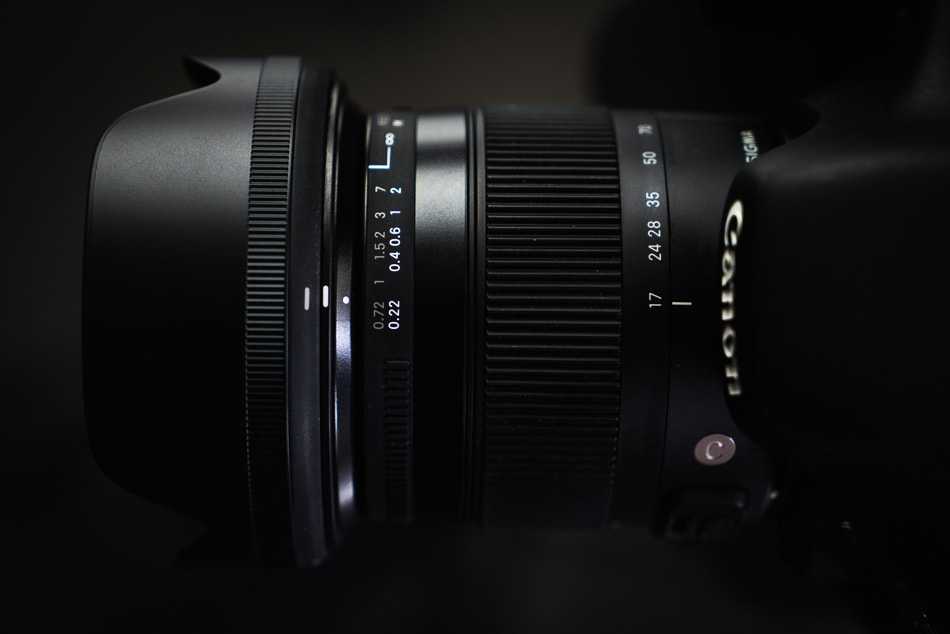
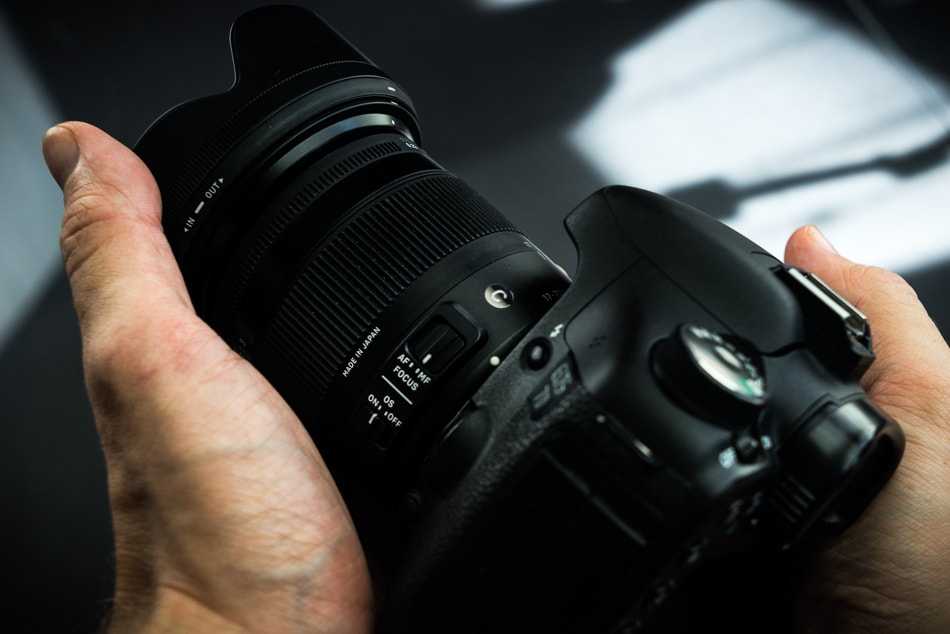
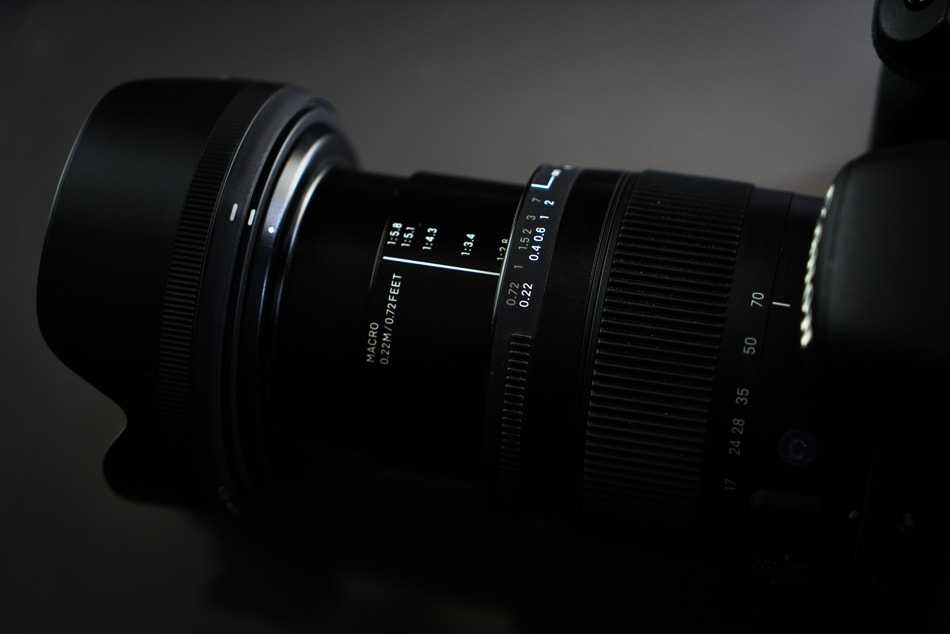

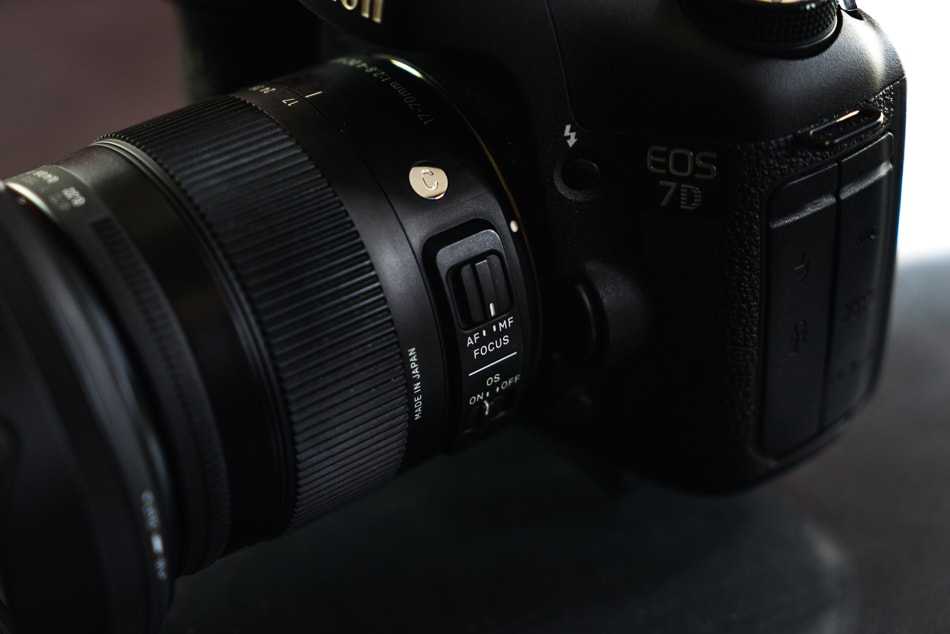
The looks of the lens are on par with what I’ve come to expect from newer models in Sigma’s “Contemporary” line; the aesthetics are very clean and understated while still being a fine lens to behold visually. The markings are well done and easily readable. A flower-style lens hood is also included with the lens and finishes off the entire package with style.
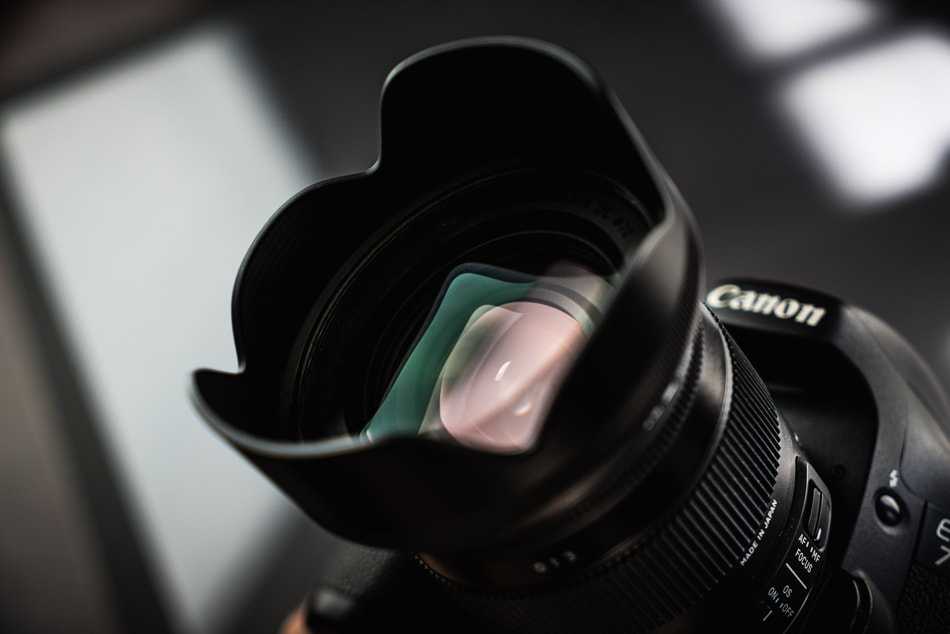
Here’s a complete list of specifications from Sigma for your viewing pleasure.
| Information | Values |
|---|---|
| Lens Construction | 16 Elements in 14 Groups |
| Angle of View | 79.7° – 22.9° |
| Number of Diaphragm Blades | 7 |
| Minimum Aperture | f/22 |
| Minimum Focus Distance | 0.22m (8.6in) |
| Filter Size | ø72mm |
| Maximum Magnification | 1:2.9 |
| Dimensions (diameter x length) | 79mm x 82mm (3.1in x 3.2in) |
| Weigth | 465g (16.4oz) |
| Mount | Sigma, Canon, Nikon, Sony, Pentax |
Sigma USB dock compatibility
The 17-70mm is compatible with Sigma’s unique USB dock, which allows you to plug the lens into your computer and apply detailed adjustments to its autofocus calibration. You can also update the firmware, which in principle provides a greater degree of ‘future proofing’ and reassurance that the lens will continue to work properly with future camera models.
| The USB dock fits onto the lens mount, and plugs into your computer. Lens settings can be changed using Sigma Optimisation Pro software, downloadable from the company’s website. | The main option available for the 17-70mm is AF microadjustment, allowing correction of any systematic misfocusing you may experience. You can also update the lens’s firmware. |
|---|
The AF microadjustment options are more detailed than you’ll find on any camera body, allowing you to define separate corrections for four different focal lengths at each of four focus distances. So if (for example) you find your copy of the lens tends to set focus slightly in front of distant subjects and slightly behind closer ones, but only at the telephoto end, then no problem: you can fix that. However it may well take quite a lot of time and experimentation to get it right.
The 17-70mm will also be eligible for Sigma’s Mount Conversion Service, which means that you’ll be able to pay to have your lens converted to a different mount should you choose to change camera brand. We’re not sure whether this will offer a useful saving compared to simply selling your lens and buying another in the new mount, but the option’s there if you want it.
Overall conclusion
The Sigma 17-70mm F2.8-4 DC Macro OS HSM is designed as an upgrade to the 18-55mm kit lenses supplied with most SLRs, and offers an interesting middle ground between fast zooms of the 17-50mm F2.8 type, and extended-range zooms in the 16-85mm class. In effect you get a bit of both — a usefully-extended range compared to those typical kit zooms, and a faster maximum aperture for better low light capability and a bit more creative control over depth of field.
In practice, the 17-70mm turns out to be an excellent choice if you’ve grown out of a kit zoom and want something a bit better. It offers generally better optics, a broader zoom range, and of course that faster aperture. But this all comes in a package that’s surprisingly compact, and doesn’t take up too much extra space in your camera bag. It’s not as light as a kit zoom, but not excessively heavy either.
The lens’s focusing and image stabilisation systems work well too. Autofocus is pretty fast, and near-silent when shooting stills; we’ve seen no obvious problems with accuracy either. Likewise the OS system is silent in operation, and works generally very well; we generally got about three stops worth of stabilisation out of it (although as usual, it’s best to take a few replicate shots when relying on OS for sharpness).
The 17-70mm’s main weakness is its image quality at wideangle; here it suffers from somewhat soft edges which don’t sharpen up on stopping down, coupled with quite strong chromatic aberration. The latter can easily be fixed in post-processing if you shoot RAW, but note that only Nikon SLRs will correct it in their JPEG output. Softer edges are more difficult to deal with, so if you spend a lot of time shooting detailed landscapes at wideangle, this may not be the best choice of lens.
The ‘Macro’ in the lens name points to its impressive-on-paper close focusing, but we found this to be a bit less useful than you might hope. The numbers certainly look good — 22cm minimum focus, 0.37x magnification — but in practice this equates to a very short working distance between the lens and the subject. This means you’ll often find yourself blocking out your own light, or casting a visible shadow on your subject. As it happens, those lowly 18-55mm kit zooms offer similar magnification with more practical working distances. So despite the ‘Macro’ label, we wouldn’t necessarily recommend this lens if close-ups are a specific priority.
The Final Word
Sigma’s faster-than-average 17-70mm lenses have long had a pretty good reputation as kit zoom upgrades, and the latest iteration continues in this tradition. Its combination of extended focal length range and faster aperture offers useful extra compositional flexibility compared to an 18-55mm F3.5-5.6, and the optics are overall better too. It’s not perfect, and in particular may not be the best option if you shoot a lot at wideangle or close-up. But it’s very good indeed, and a great choice for SLR owners looking to expand their horizons beyond the kit zoom.
|
Sigma 17-70mm F2.8-4 DC Macro OS HSM | C Category: Normal Lens |
|
Optical Quality Build Quality Autofocus Image Stabilization Ergonomics and Handling Value |
PoorExcellent |
|||
|
Conclusion Sigma’s latest ‘C’ badged 17-70mm F2.8-4 is an excellent upgrade option for SLR shooters who’ve outgrown their kit zooms, and are looking for better image quality and more creative flexibility. It offers a fine balance of zoom range and maximum aperture, while still being highly portable. Autofocus and image stabilisation both work well, but image quality at wideangle isn’t the best. |
||||
|
||||
|
Design
The 17-70mm uses Sigma’s latest cosmetic design and finishing, introduced alongside its rearrangement of its new lenses into ‘Contemporary’, ‘Art’ and ‘Sports’ categories. The changes aren’t in fact huge — the lens name has moved from the zoom ring to the barrel, and lettering that used to be gold is now white — but the resultant entirely monochrome look is somewhat more understated and elegant than before. It’s rounded off by the silver ‘C’ (for ‘Contemporary’) badge, that’s inlaid into the barrel.
In terms of construction though, the 17-70mm is much like other recent Sigma lenses at this price level, which means a lightweight but solid-feeling black plastic barrel, and relatively smoothly-operating zoom and focus rings. It uses a ‘double trombone’ design to extend to its longest setting, with impressively little play of the barrel when set to 70mm. As we’d expect of a lens at this price, the mount is metal.
Two large, positive switches on the side of the barrel control the autofocus and image stabilization mechanisms. The AF switch is distinctly the larger of the two, making it easier to distinguish by touch alone while shooting. It also has a white inlay that’s visible when the lens is set to AF, which provides a quick visual check for the focus mode in poor light when the lettering can be hard to see.
Compared to Canon EF-S 18-55mm f/3.5-5.6 IS STM
Here’s the Sigma alongside a fairly typical SLR kit zoom, Canon’s latest EF-S 18-55mm f/3.5-5.6 IS STM. This view shows how impressively Sigma has managed to minimise the size of the 17-70mm; despite its longer zoom range and faster aperture, it’s really not very much bigger. The real difference, though, lies in the weight — the Sigma is over twice as heavy.
Optical Image Stabilization
Whether it’s referred to as vibration reduction, vibration control, or shake reduction, the incorporation of some type of optical image stabilizer built into a lens is quickly becoming more of an expectation than a luxury. Sigma uses the designation “OS” (optical stabilizer) for their image stabilization technology. The 17-70mm certainly does not fail to deliver in this area. However, it is of note to Sony and Pentax users that those lenses will not have the OS option built into the lens itself.
Generally, I subscribe to the Reciprocal Rule when it comes to determining the minimum acceptable shutter speed to reduce camera shake when shooting off-hand without a tripod. This rule simply states that your shutter speed should be no longer than “1/focal length” when no camera rest is available. So at 70mm, my shutter should remain open no longer than 1/70 seconds. But with an effective image stabilizer, like the one used in the Sigma, this rule can be stretched quite a bit.
Here we have two images shot at 70mm but at a relatively long shutter speed of 1/10 second. In the first photo, we see the obvious effects of shooting at this shutter speed without the benefits of the optical stabilizer.

Next, I switch on the OS function of the 17-70mm and the results are readily apparent.

Remember that these two images were shot at the exact same shutter speed. The OS of the Sigma did an amazing job of reducing the camera shake even though I was shooting at a shutter speed much slower than I would have normally dreamed of using without the shake reduction technology.
Lens body elements
| The lens comes in Canon, Nikon, Pentax, Sigma and Sony versions; our review sample was in the Canon EF mount.This view shows the somewhat unusual ‘double trombone’ mechanism which is used for moving the rear element on zooming. | |
|---|---|
| The filter thread is 72mm, which means rather more expensive filters compared to the typical kit zoom. It does not rotate on autofocusing, though. | |
| The bayonet-mount hood is provided as standard, and clicks positively into place on the front of the lens. It’s made from thick plastic, and features ribbed moldings on the inside to minimize reflections of stray light into the lens. Sigma has even added a ribbed grip to make it easier to remove.A white dot on the outside of the hood aids alignment for mounting, and the hood reverses neatly for storage. | |
| The zoom ring has a 21mm wide rubber grip, and rotates 60 degrees anti-clockwise from wide to telephoto (the same way as Canon lenses, but opposite to Nikon, Pentax and Sony’s). In typical Sigma fashion the action is smooth and even. The front element extends 40mm on zooming and feels impressively solid when fully extended, with just a little lateral play. |
|
| The focus ring is 15mm wide grip, although the ridged grip makes up just 4mm of that. It rotates 50 degrees clockwise from infinity to 0.22m, matching Canon and Sony lenses but opposite to those from Pentax and Nikon. The focusing action is smooth, but a little loose; the ring also rotates during autofocus. A basic distance scale is marked in feet and meters. The imperial markings are in mid-grey on a dark grey background, which isn’t especially legible. |
|
| Two chunky, positive switches on the side of the lens barrel set the focus and image stabilization modes. When the focus switch is set to AF a white inlay is visible behind it; this provides a quick, positive visual confirmation of its position. You can’t adjust focus manually when the lens is set to AF (or at least, you shouldn’t try). |
|
| A slightly curious scale on the outer sleeve of the ‘double trombone’ zoom mechanism shows the image magnification when the lens is set to its minimum focus distance of 0.35m. The numbers correspond to each of the focal lengths marked on the zoom ring, except for 17mm. | |
| As on other recent Sigma lenses, a deeply-ridged grip covers most of the underside of the barrel, and provides positive traction for changing lenses. It’s a small touch and easily overlooked, but genuinely worthwhile. | |
| An inset silver-coloured ‘C’ on the lens barrel denotes that this lens is part of Sigma’s ‘Contemporary’ range. |
Image Quality
The Sigma 17-70mm is not a fixed aperture lens. This means that as the focal length is increased the maximum aperture is reduced. At the widest focal length of 17mm, the maximum aperture is a nice and fast f/2.8. At this maximum aperture the center image sharpness is surprising good. I would nearly call it great, in fact. There is noticeable fall-off of the sharpness at the corners with some purple fringing aberrations but again, nothing that is overly disrupting.The barrel distortion is evident but not unacceptable especially considering this image was shot at the lenses minimum focusing distance of approximately 8.6 inches (22cm). I also noted that on the model I tested the minimum focusing distance was less than the listed measurement.

As you zoom in, the maximum aperture of the lens decreases to f/3.2. Overall sharpness is still very good and the distortion decreases dramatically. The corner sharpness improves and so does the appearance of the purple chromatic aberration.

Which brings us to the maximum aperture possible with this lens after zooming in further than approximately 45mm, which is f/4. Sharpness is excellent even at this still relatively workable low-light f/4 aperture. The edge sharpness is even more improved and so is the chromatic aberration.
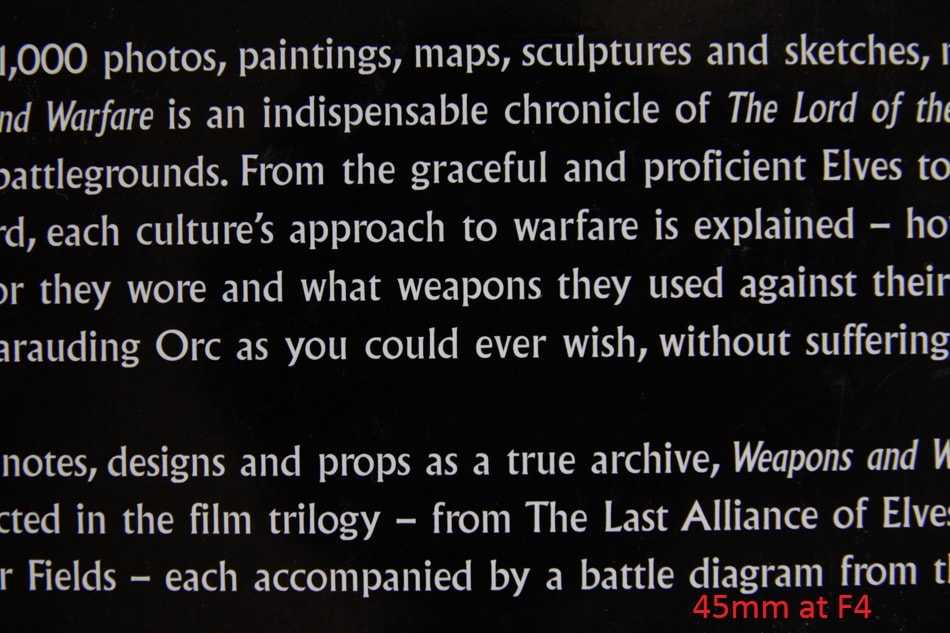
From here, the test images were shot at the maximum focal length of 70mm as the images progress through the aperture range of f/5.6 to the minimum aperture of this lens at f/22.
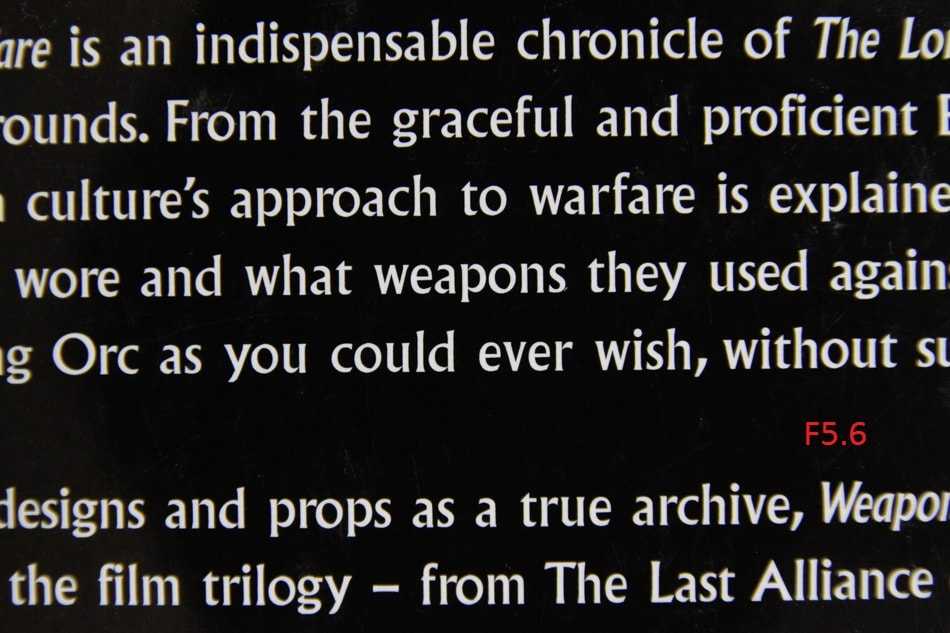
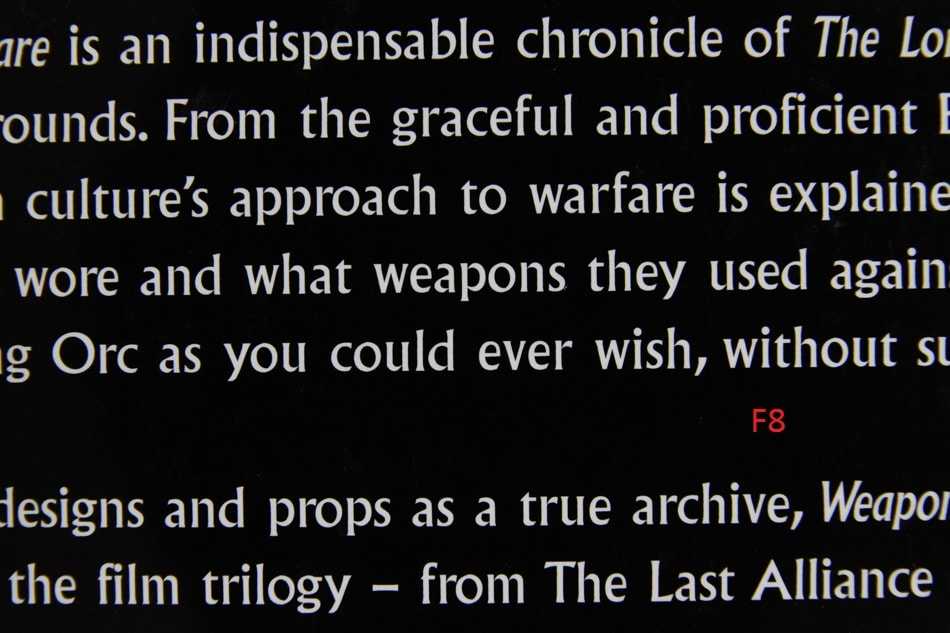



Oddly enough, the corner sharpness seems to degrade slightly at f/5.6 before gradually improving until it reaches it’s apparent maximum overall sharpness at f/11. This aperture also shows us the minimum overall chromatic aberrations. In general, the Sigma 17-70mm shows wonderful sharpness from f/2.8 to f/22. Just keep in mind that those faster apertures of f/4 or greater are only possible at shorter focal lengths such as 45mm or less.
5.1 Тест на резкость.
Далее я провел тест на резкость. Этот тест заключается в следующем — делается «пристрелка» по мишени с различными диафрагмами и на различных фокусных расстояниях, после чего сравниваются результаты. Результаты — это фрагменты мишени, взятые из области у центра кадра и у края кадра. Тест проводился при следующих условиях, была взята мишень, распечатана на принтере. В идеале мишень необходимо печатать на лазерном принтере при разрешении 600 dpi, но за неимением такого, я распечатал ее на струйном принтере на фотобумаге Lomond. Мишень я закрепил на вертикальной поверхности и сверху подсветил галогенным прожектором на 300 Вт. Перед мишенью установил фотокамеру на штативе. Съемка велась в режиме Av, спуск проводился при помощи таймера в 2 сек, с блокировкой поднятого зеркала. Это поможет свести на нет всю шевеленку. Использовалась автофокусировка по центральной точке в режиме ONE SHOT, стабилизатор отключен. В итоге представляю вам результаты данного теста
Внимание, данный тест не является сверх точным, т.к. проводился в бытовых условиях, но оценить степень резкости на той или иной диафрагме при том или ином фокусном расстоянии можно без проблем
Фокусное расстояние 17 мм

| Диафрагма | Фрагмент мишени из угла | Фрагмент мишени из центра |
| f/2.8 | ||
| f/4 | ||
| f/5.6 | ||
|
f/6.3 |
||
| f/7.1 | ||
| f/9 | ||
| f/11 | ||
| f/16 | ||
| f/22 |
Фокусное расстояние 28 мм

| Диафрагма | Фрагмент мишени из угла | Фрагмент мишени из центра |
| f/3.5 | ||
| f/4.5 | ||
| f/5.6 | ||
|
f/6.3 |
||
| f/7.1 | ||
| f/9 | ||
| f/11 | ||
| f/16 | ||
| f/22 | ||
| f/16 |
Фокусное расстояние 50 мм
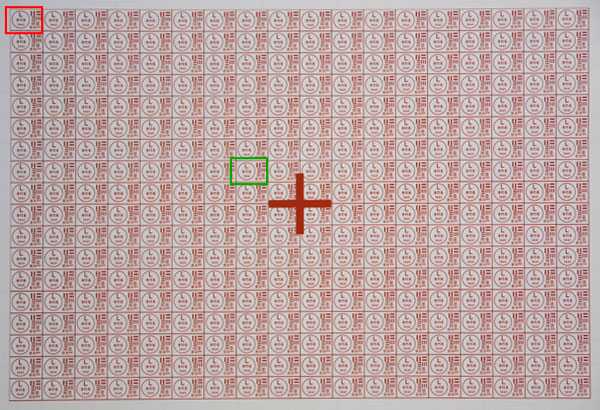
| Диафрагма | Фрагмент мишени из угла | Фрагмент мишени из центра |
| f/4 | ||
| f/5.6 | ||
| f/6.3 | ||
|
f/7.1 |
||
| f/9 | ||
| f/11 | ||
| f/16 | ||
| f/22 | ||
| f/29 | ||
| f/32 |
Фокусное расстояние 70 мм
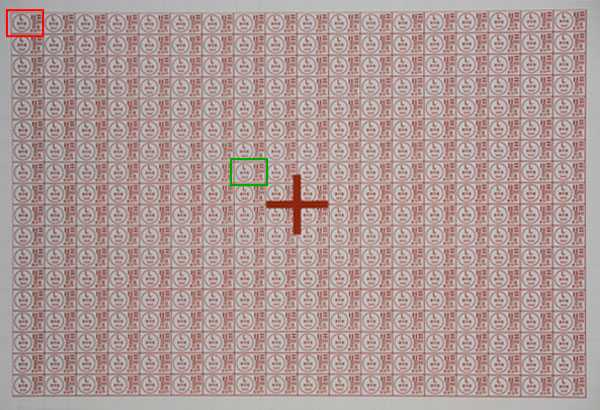
| Диафрагма | Фрагмент мишени из угла | Фрагмент мишени из центра |
| f/4 | ||
| f/5.6 | ||
| f/6.3 | ||
|
f/7.1 |
||
| f/9 | ||
| f/11 | ||
| f/16 | ||
| f/22 | ||
| f/29 | ||
| f/32 |
5.2 Тест на искажения:
Чтобы выяснить искажает ли перспективу данный объектив, я распечатал вот такую мишень. Далее закрепил ее на вертикальной поверхности и установил камеру на штатив перед мишенью и сделал пристрелку с разными фокусными расстояниями
Здесь нам не важна резкость, нам важно проанализировать линии у края кадра, давайте посмотрим что у меня получилось и проанализируем результат
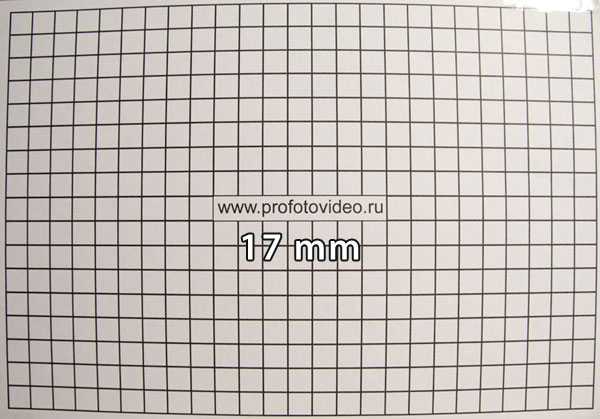
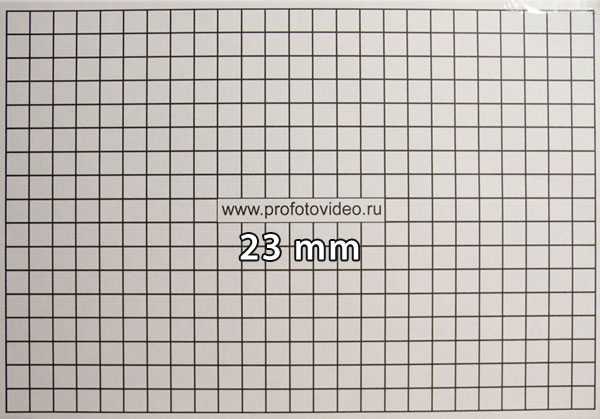
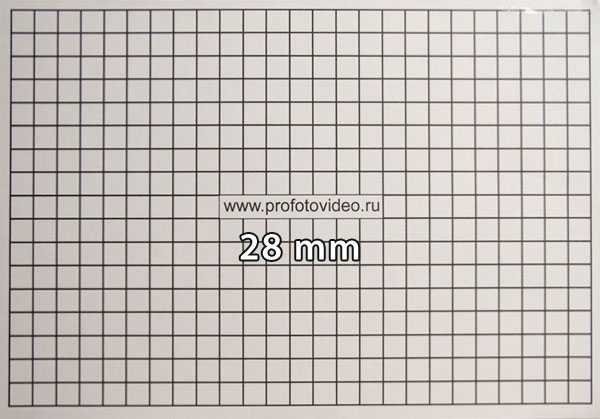

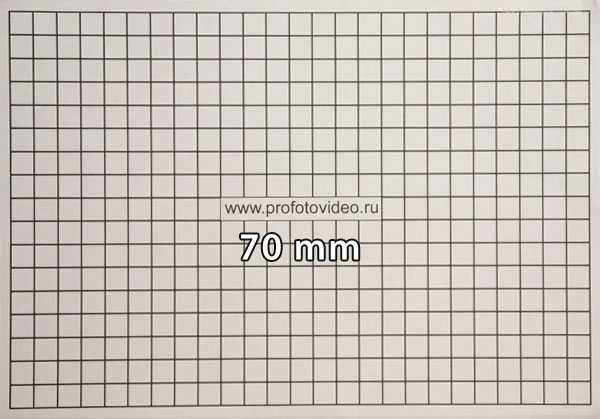
Итак, видно, что на 17 мм объектив дает заметную бочкообразную дисторсию, на широком угле этим грешат все зум объективы подобного класса. Здесь Sigma 17-70 mm F/2.8-4 DC Macro OS HSM не хуже и не лучше других. Данную бочку в какой то мере можно победить в Фотошоп. Но заметьте, уже на 23 мм «бочка» резко выпрямляется. На 28 мм «бочка» уже практически незаметна, на других ФР ее уже нет. И лишь на 70 мм появляется еле заметная подушкообразная дисторсия, которую без труда полностью можно победить в фотошоп. Но такую дисторсию не живой фотографии увидит не каждый, так что бороться с ней или нет тоже под вопросом. В целом в данном тесте Sigma 17-70 mm F/2.8-4 Macro OS HSM показал очень недурные результаты, дисторсия сильно заметна лишь в широкоугольном положении.
Introduction
The Sigma 17-70mm F2.8-4 DC Macro OS HSM C is a fast and compact standard zoom lens for APS-C sensor DSLR cameras. It offers the equivalent angle of view as a 25.5-105mm lens on an APS-C DSLR (depending on the crop factor). The Sigma 17-70mm F2.8-4 DC Macro OS HSM C features a rounded 7 blade diaphragm which creates an attractive blur to the out of focus areas of the image. It has a minimum focusing distance of 22cm /11.0in and a maximum reproduction ratio of 1:2.8, while the HSM (Hyper Sonic Motor) ensures a silent, high-speed AF function. The Sigma 17-70mm F2.8-4 DC Macro OS HSM C lens is currently available for £499.99 / $499.99 in the UK and the US, respectively.
Samples Gallery
There are 36 images in the samples gallery. Please do
not reproduce any of these images on a website or any newsletter / magazine
without prior permission (see our copyright
page). We make the originals available for private users to download
to their own machines for personal examination or printing (in conjunction
with this review), we do so in good faith, please don’t abuse it.
Unless otherwise noted images taken with no particular
settings at full resolution. Because our review images are now hosted on the ‘galleries’ section of dpreview.com, you can enjoy all of the new galleries functionality when browsing these samples.
Studio Tests
The Sigma 17-70mm performs generally pretty well in studio tests. It’s weakest at wideangle, with somewhat soft edges and corners that never fully sharpen up on stopping down. But aside from that it’s an admirably consistent performer, with
good cross-frame sharpness and reasonably low levels of chromatic aberration, distortion and vignetting.
| Sharpness | Sharpness results are generally pretty good. The lens is weakest at 17mm, where the edges and corners are rather soft, and don’t sharpen up at any aperture. But at longer focal lengths it’s very well-behaved, with decent sharpness wide open, and excellent results at its optimum apertures around F5.6-F8. |
|---|---|
| Chromatic Aberration | Chromatic aberration is kept reasonably low. It’s worst at wideangle, where there’s pretty strong green/magenta fringing towards the edge and corner of the frame. It decreases on zooming in, and is very low around 35-50mm, before red/cyan fringing becomes visible at 70mm. |
| Vignetting | Vignetting is overall rather low, given the lens’s maximum aperture and compact size. It’s strongest at wideangle, with 1 stop light falloff in the corners wide open, dropping down to 0.6 stop at F4. But in practical use this counts as nothing to worry about. |
| Distortion | Distortion is kept pretty well under control. There’s clear barrel distortion at wideangle, but it’s no worse than a typical 18-55mm, and much better than most lenses with extended zoom ranges. This disappears at 24mm, before turning to moderate pincushion distortion from 35-70mm. |
Macro Focus
|
Macro — 60 x 40 mm coverage Measured magnification: 0.37x Distortion: Moderate barrel Minimum focus distance*: 21.0cm Working distance**: 4.3cm Focal length: 70mm |
|
|---|---|
| * Minimum focus is defined as the distance from the camera’s sensor to the subject** Working distance is measured from the front of the lens to the subject |
As the ‘Macro’ label suggests, the Sigma 17-70mm offers good close focusing specs, on paper at least. But the reality is a little more complicated, as the working distance from the front of lens to the subject is extremely short. Coupled with the relatively large diameter front of the lens, this causes all sorts of problems with lighting and disturbing your subject. The internal focus design means that the angle of view widens quite dramatically at minimum focus too, to an effective focal length that’s much closer to 50mm, so the lens doesn’t ‘feel’ like a moderate telephoto any more at all.
Here we’re looking at what we’d consider to be about the closest practical focusing distance, where the shadowing by the front of the lens generally isn’t too severe, and the camera can still confirm autofocus in live view. At this point the focus distance is 0.21m, slightly shorter than Sigma’s specified 0.22m, and the working distance just a shade over 4cm. You can get even closer in manual focus.
With the lens set to F4 the image is pretty soft across the beard, but central sharpness improves dramatically at F5.6. However the corners are still soft in this flat test chart shot, and only properly sharpen up at F16. There’s also quite strong barrel distortion, and strong blue/yellow fringing towards the corners from lateral chromatic aberration. In context, 18-55mm kit zooms generally offer similar coverage, but with lower distortion and a more practical working distance.
Full Frame Coverage
The Canon, Nikon and Sony mount versions of this lens will mount on full-frame DSLRs, and on Nikon cameras DX crop mode will be automatically selected (the camera will therefore shoot at reduced resolution). The lens’s image circle doesn’t cover the 35mm full frame format at any focal length, giving severe vignetting regardless of focal length, aperture, or focus distance. So this really isn’t a lens you can sensibly share across SLRs of different formats.
| 17mm | 28mm | 70mm |
Optical Stabilization
The 17-70mm features Sigma’s own ‘Optical Stabilization’ system, and the company claims that it allows hand-holding at shutter speeds up to four stop slower than usual without seeing the blurring effects of camera shake. The mechanism is silent when operational, with only the stabilization of the viewfinder image betraying the fact that it’s running.
To determine the effectiveness of the OS system we subjected the 17-70mm to our studio image stabilization test, using the wideangle and telephoto settings. The subject distance for these tests was approximately 3m at 18mm, and 4m at 70mm; the test camera was the Canon EOS 700D.
We take 10 shots at each shutter speed and visually rate them for sharpness. Shots considered ‘sharp’ have no visible blur at the pixel level, and are therefore suitable for viewing or printing at the largest sizes, whereas files with ‘mild blur’ are only slightly soft, and perfectly usable for all but the most critical applications.
| 17mm OS OFF | 70mm OS OFF |
| 17mm OS ON | 70mm OS ON |
The 17-70mm fares respectably well in these tests, although it doesn’t quite match the best optical stabilisation we’ve seen. At wideangle it offers a solid three stops of stabilisation, allowing hand-holding at shutter speeds as low as 1/4 sec, rather than 1/30 sec with OS off. At 70mm things are a bit more complicated; we’re able to get a decent proportion of sharp shots at shutter speeds 4 stops slower with OS turned on (1/10 vs 1/160 sec ), but the system is never close to 100% effective, so it pays to take multiple shots in marginal conditions.
Real world examples
The examples below should give you an idea of how well the Sigma’s OS system behaves in everyday shooting; in both cases the image would be hopelessly blurred without stabilization. But instead we’ve been able to take advantage of the ability to hand-hold at slower shutter speeds to get shots that would otherwise be difficult.
In the first example, the camera was shot in live view, held high up to shoot over the top of a crowd of people to capture the floodlit dome of St Paul’s just after sunset. This is a notoriously unstable shooting position, but even so, of multiple shots at shutter speeds around 1/15 sec, half came out perfectly sharp. In the second example, the use of a shutter speed about three stops lower that could otherwise be handheld has allowed the use of ISO 1600 rather than 12800, and the image still retains a decent amount of detail even in the camera’s JPEG.
Из данного теста видно:
- Как и у других зум объективов такого класса можно наблюдать потерю резкости у края кадра, на «коротком конце» 17 mm это видно отчетливо, на других фокусных расстояниях данный объектив показал очень хорошие результаты, резкость по краям не уступает резкости в центре кадра (смотрите и завидуйте все кто хаят Sigma).
- Максимально открытая диафрагма f/2.8 возможна только на ФР 17 мм, и в большей степени наличие такой диафрагмы это маркетинговый ход (т.к. светосила 2,8 добавляет зум объективу больше солидности и увеличивает его стоимость), видимо маркетологи и создатели Sigma сыграли на этом.
- На диафрагмах от f/4 появляется резкая картинка и остается стабильно резкой аж до f/11, а это очень хороший результат!
- На диафрагмах от f/11 и выше происходит плавное падение контраста и резкости из-за дифракционных эффектов свойственных матрицам цифровых фотокамер. Поэтому дальнейшее уменьшение диаметра диафрагмы (f/16 и более) обычно не целесообразно («дифракционное размыливание» изображения будет хорошо заметно как в нашем случае на диафрагмах от f/16 до f/32). Не используйте диафрагмы уже f/16
|
On the camera
These views reiterate the 17-70mm’s size, or rather, lack of it. On the EOS 700D shown left, it’s perfectly well balanced and doesn’t feel bulky at all. Even on the diminutive EOS 100D it’s not hugely out of proportion. The zoom ring is placed towards the centre of the of the barrel where it falls naturally to hand, and the AF and OS switches operate with satisfyingly positive clicks.
About the only operational criticism lies with the manual focus ring; it’s slightly ‘loose’ in feel, and coupled with its short travel, this can make critical manual focusing slightly tricky. Then again, we suspect the majority of users will use autofocus almost all of the time, so this won’t matter much. The ring also rotates during autofocus, but that’s true of many lenses at this price level.
Dependence of effective focal length on focus distance
This lens’s angle of view widens substantially on focusing from infinity to 0.22m, particularly at the telephoto end. This isn’t unusual with internal focusing zooms, and in normal use isn’t really noticeable. Its biggest impact is for close-up work, where the effective focal length is closer to 50mm than 70mm. This means it feels like a rather ‘short’ macro lens, with a wider field of view than you’d get with a 60mm macro prime.
Autofocus
The 17-70mm uses Sigma’s Hypersonic Motor for autofocus, and when shooting with the optical viewfinder our Canon mount sample was pretty quiet in use, and impressively fast and decisive. As always, though, it must be noted that focus speed and accuracy is dependent upon a number of variables, including the camera body used, subject contrast, and light levels.
Switch from the optical viewfinder to live view, though, and the story
changes. Focusing slows right down (although the exact speed is highly dependent on the camera used), and if you refocus during recording the clicking of the AF motor will be audible on your soundtrack as the camera fine-tunes focus. To be fair most SLR lenses behave much the same, as they’re just not optimised for video work (the honourable exceptions being Canon’s STM models).

























